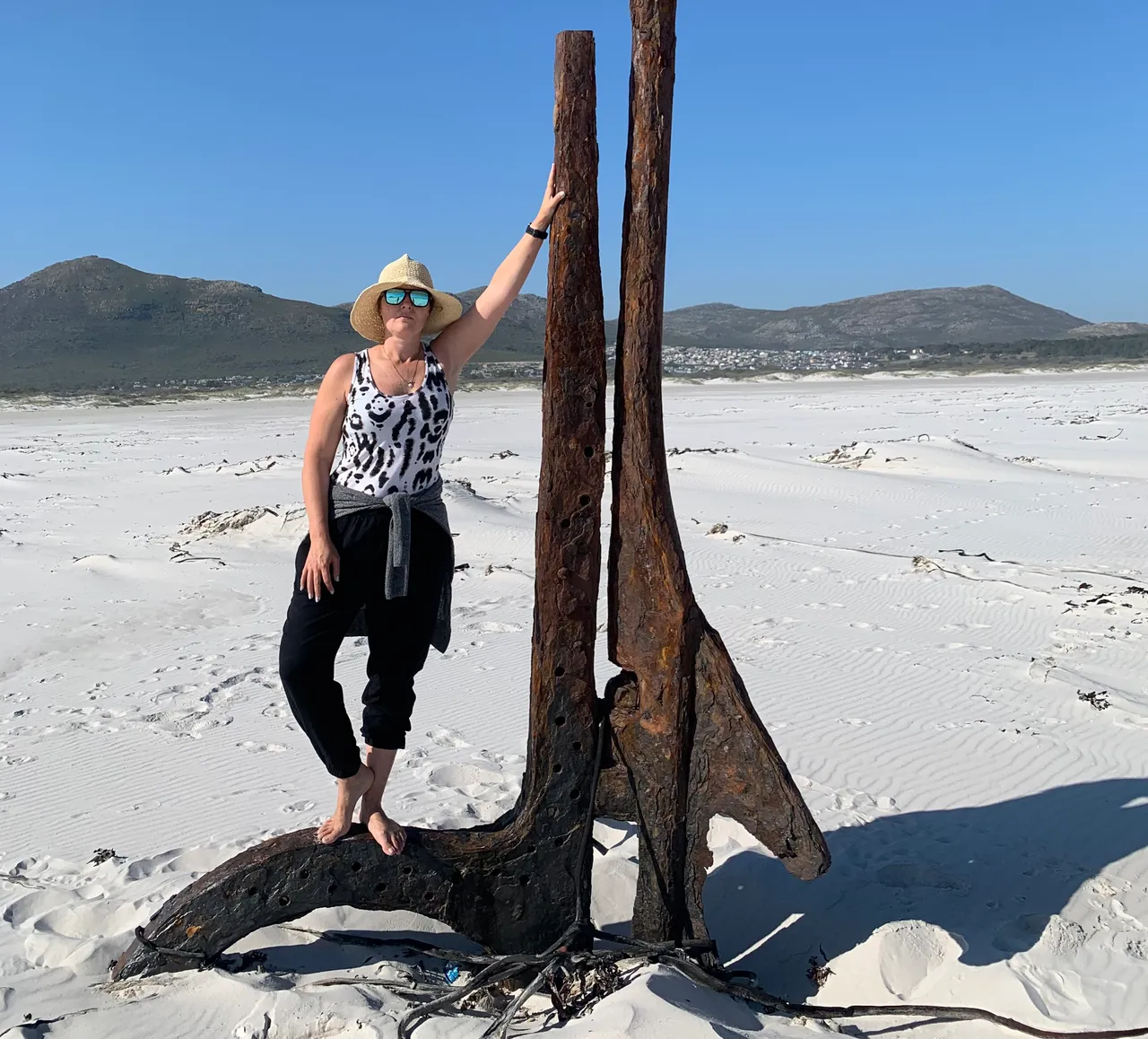
On Sunday morning we woke up to the most gorgeous weather in the middle of Winter. This tends to happen as the weather fronts hit every second week giving us a week of rain followed by a week of sun if we’re lucky. And preceding each cold front is a deceptive warm berg wind.
So we headed down to the beach for a family walk on Noordhoek Beach. We started on Long Beach in Kommetjie and then rounded the rocky point and crossed a small river as we continued on Noordhoek Beach headed for the wreck of the Kakapo.
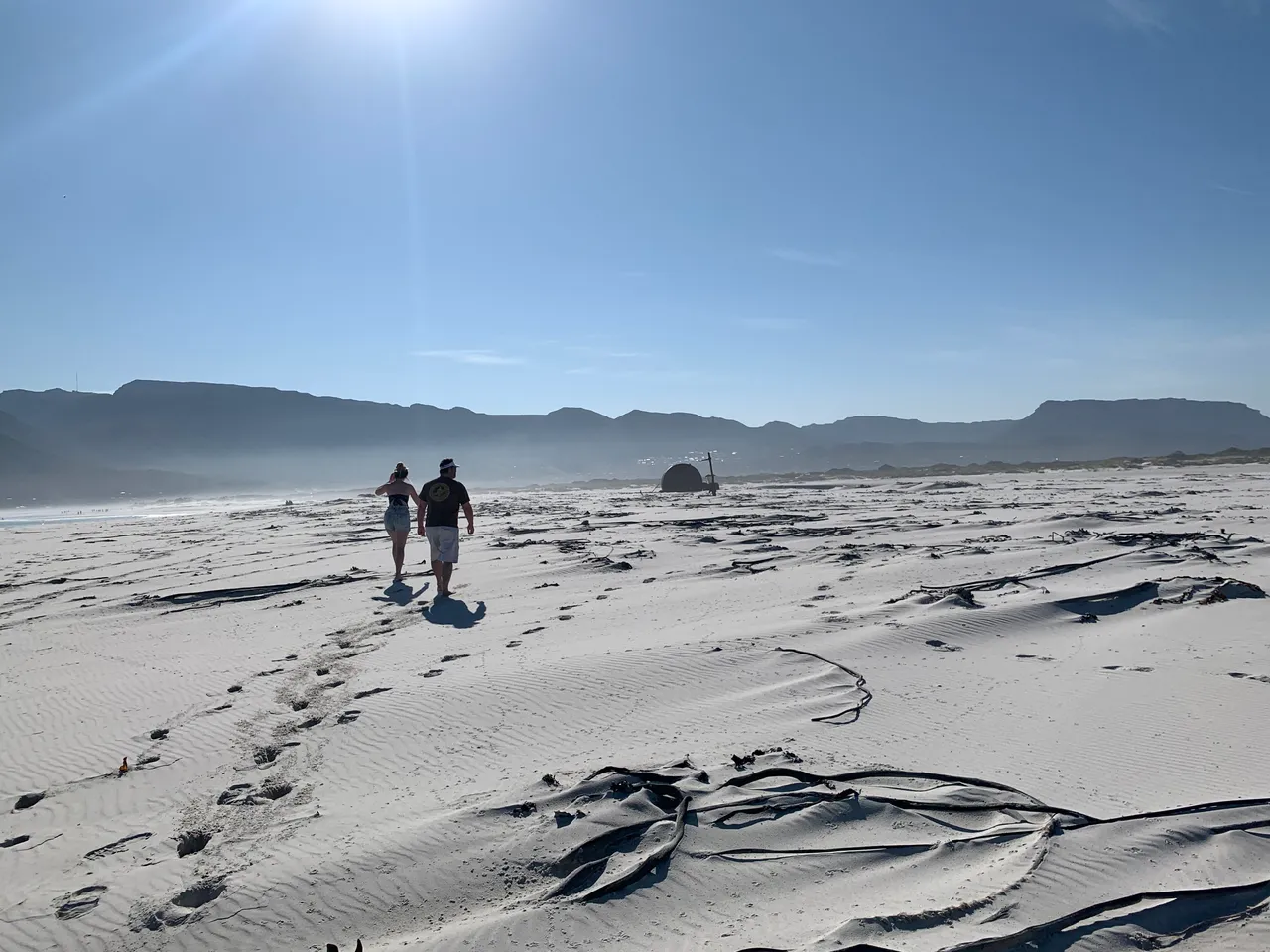
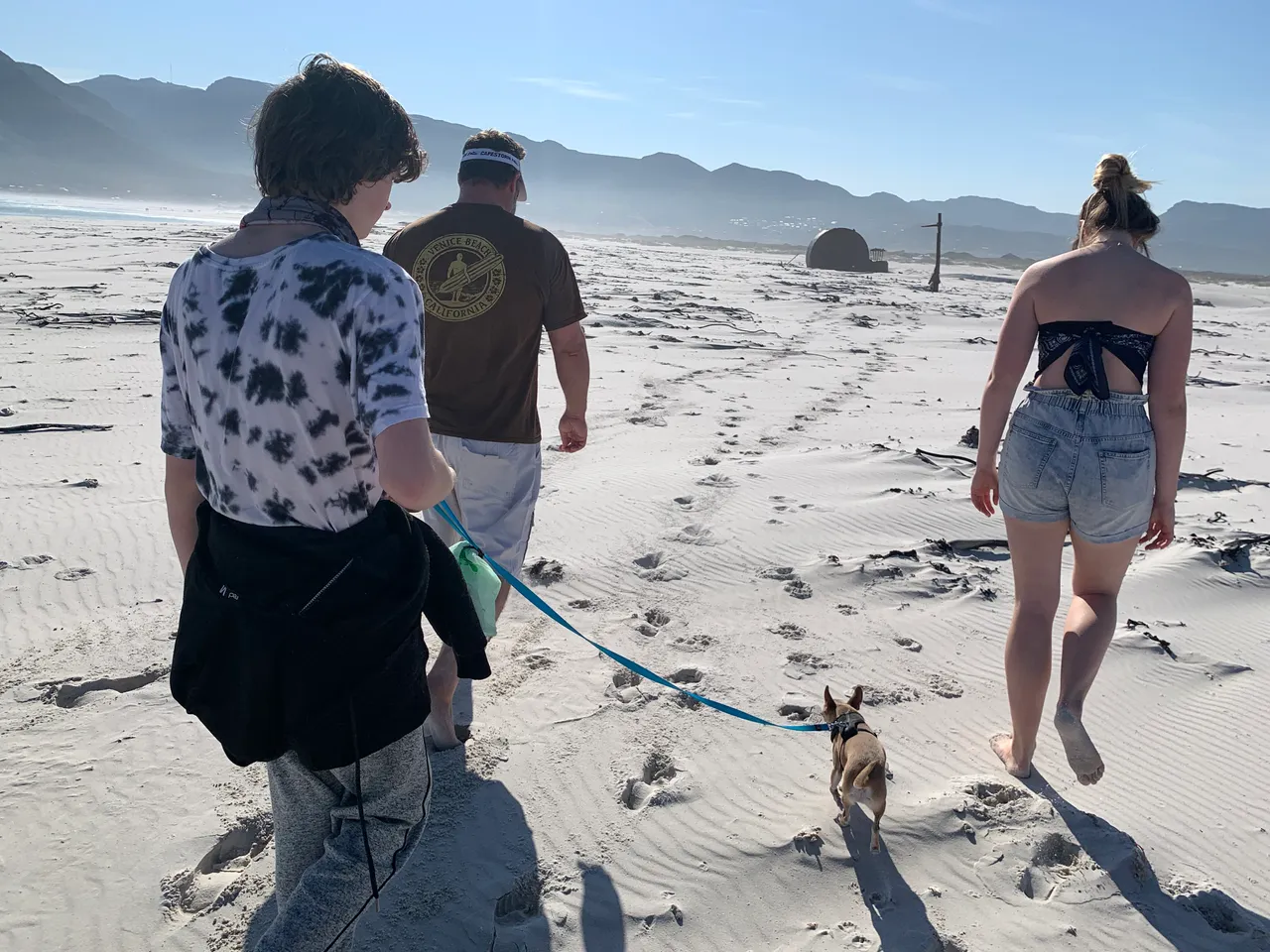
We’ve lived in Kommetjie for a year and this is the first time that we have ventured to the wreck for a closer look. We pass horses with their riders and small groups of folk with their dogs.
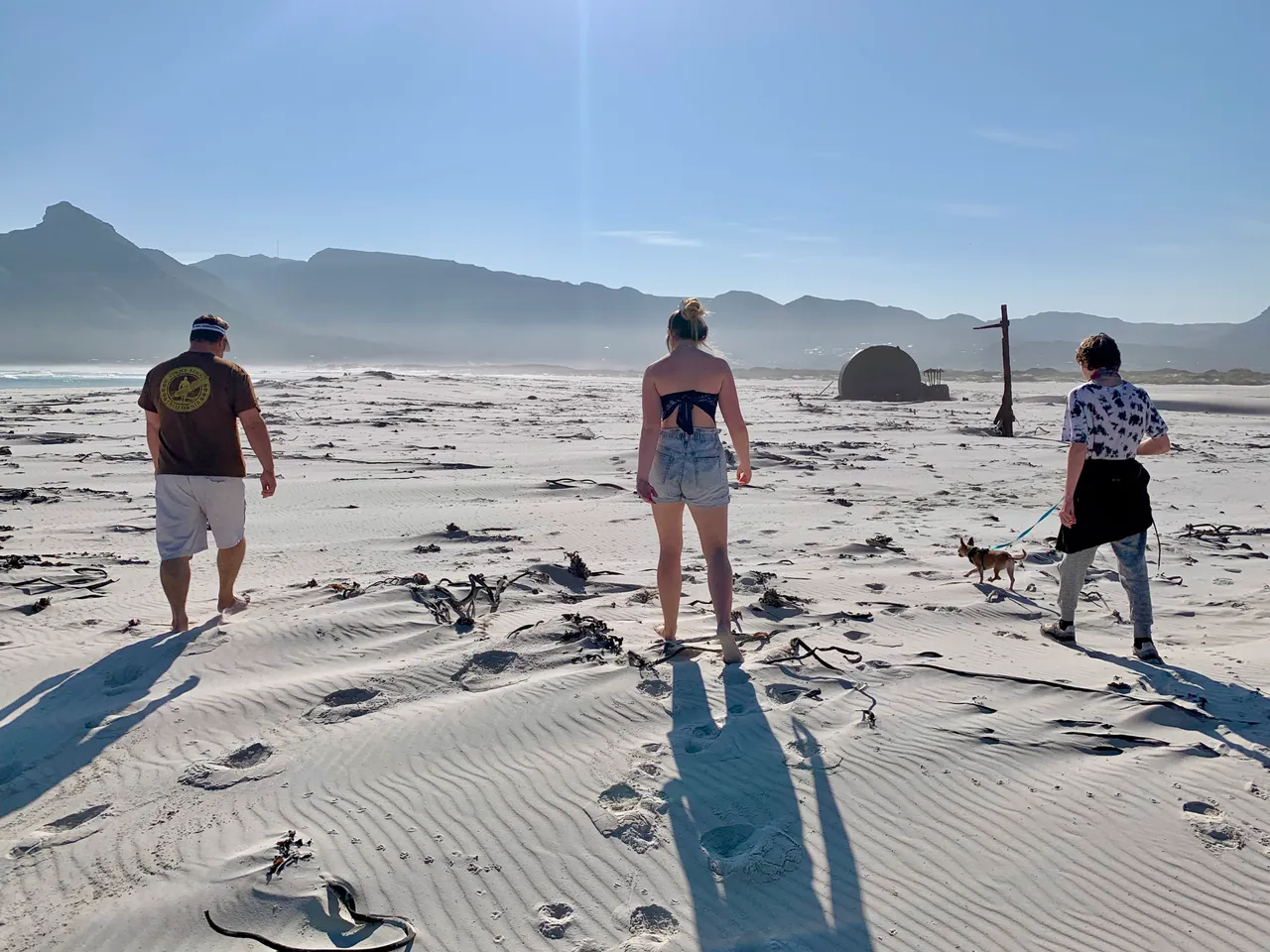
As we approached the wreck I was aware of the wide open space of this vast beach. And it makes the position of the wreck so far up the beach so much more obvious.
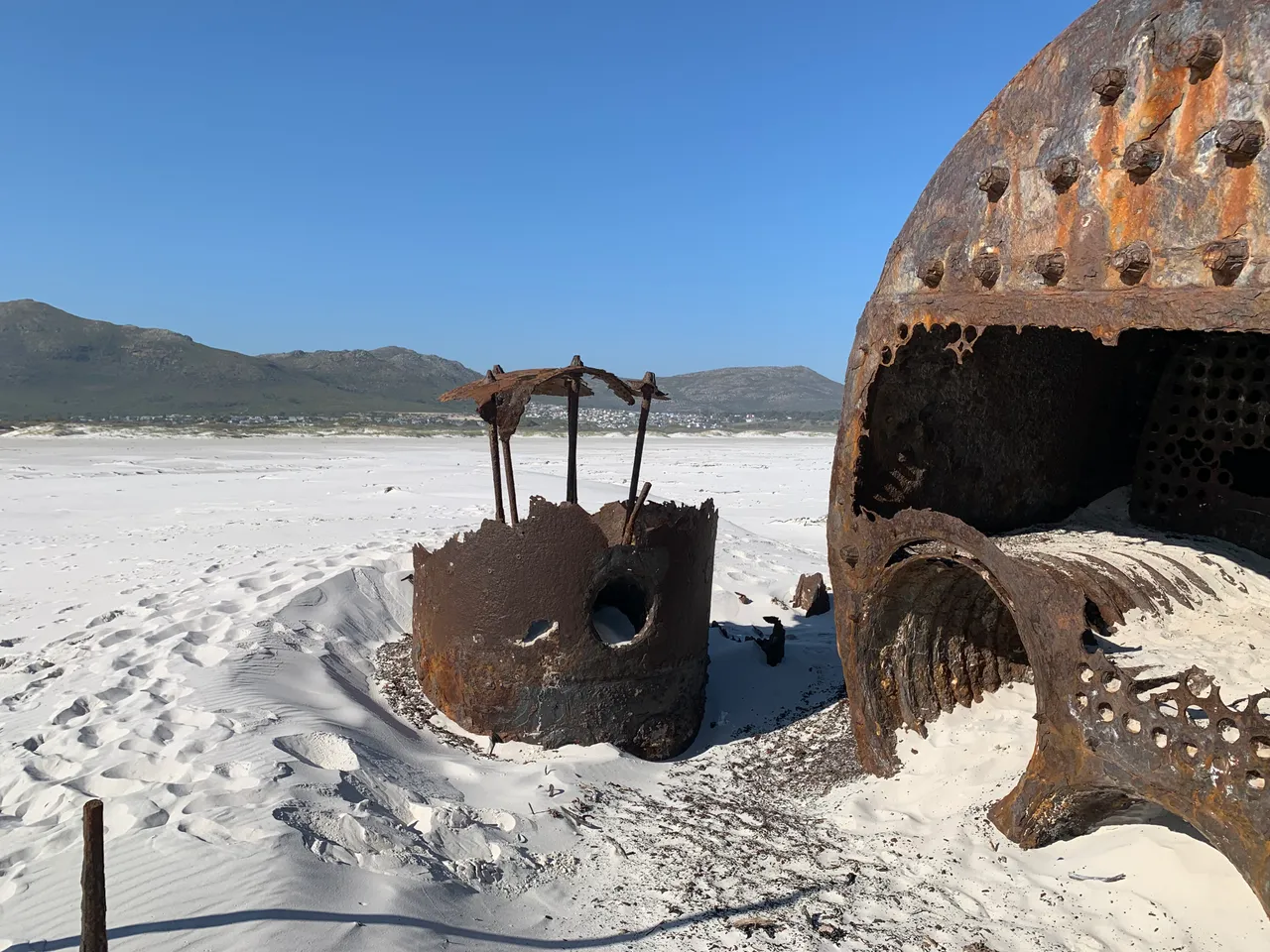
I read up a little bit about this infamous steam ship called the Kakapo. She was built in 1898 and set sail from Swansea in Wales headed for Sydney Australia around Cape Point on the Southernmost tip of Africa.
The Kakapo had to put in at Table Bay and then again set off in North Westerly gale force wind. As the ship rounded Hout Bay and spotted Chapmans Peak, the captain unfortunately mistook Chapmans Peak for Cape Point. By the time he realised his mistake the Kakapo was driven aground. Luckily no lives were lost as all the crew managed to scramble to shore. Apparently the ship was left as scrap on the beach.
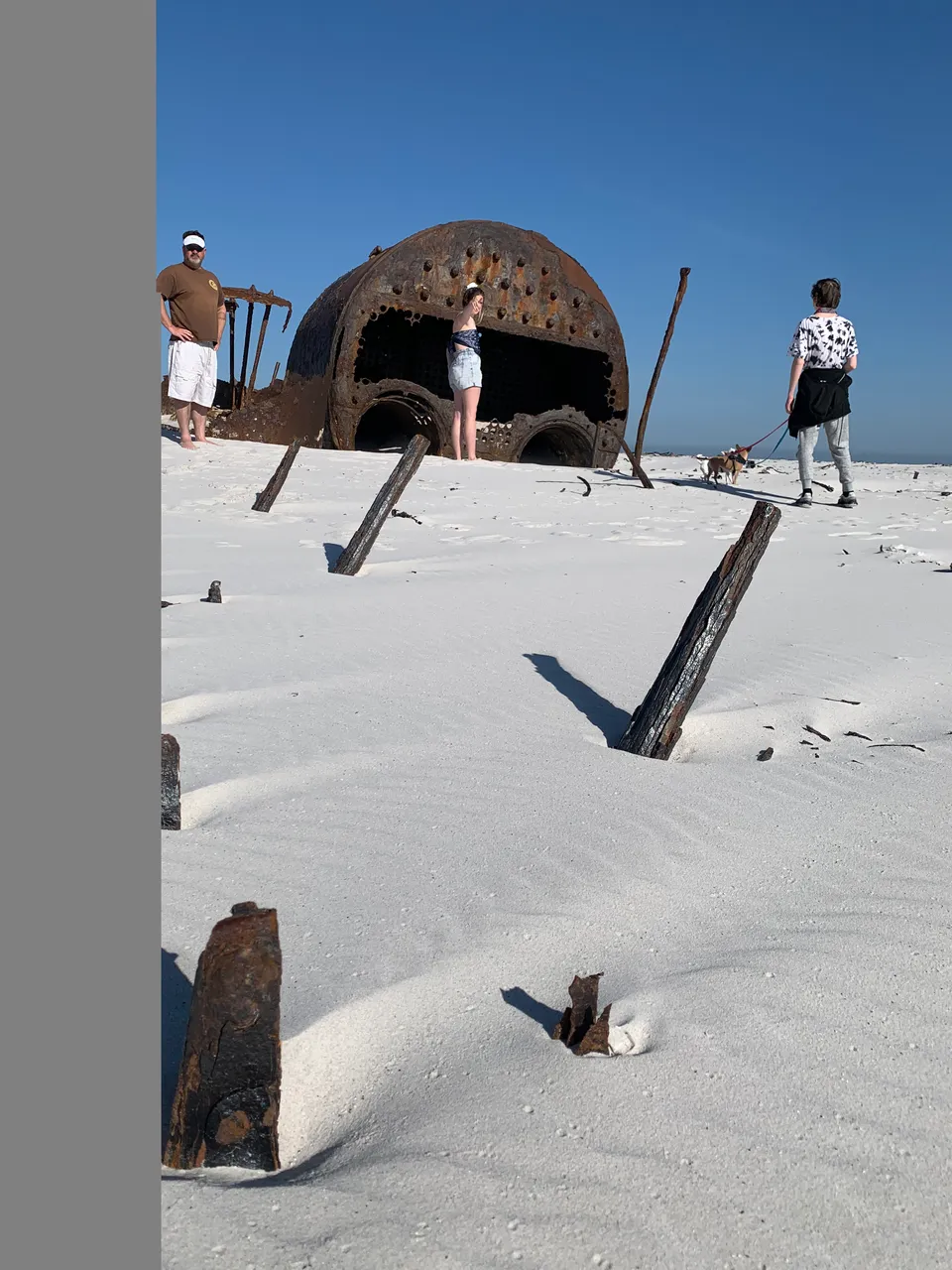
Today the ship looks like a set of ribs poking dangerously out of the sand with its giant boiler visible from kilometres away.
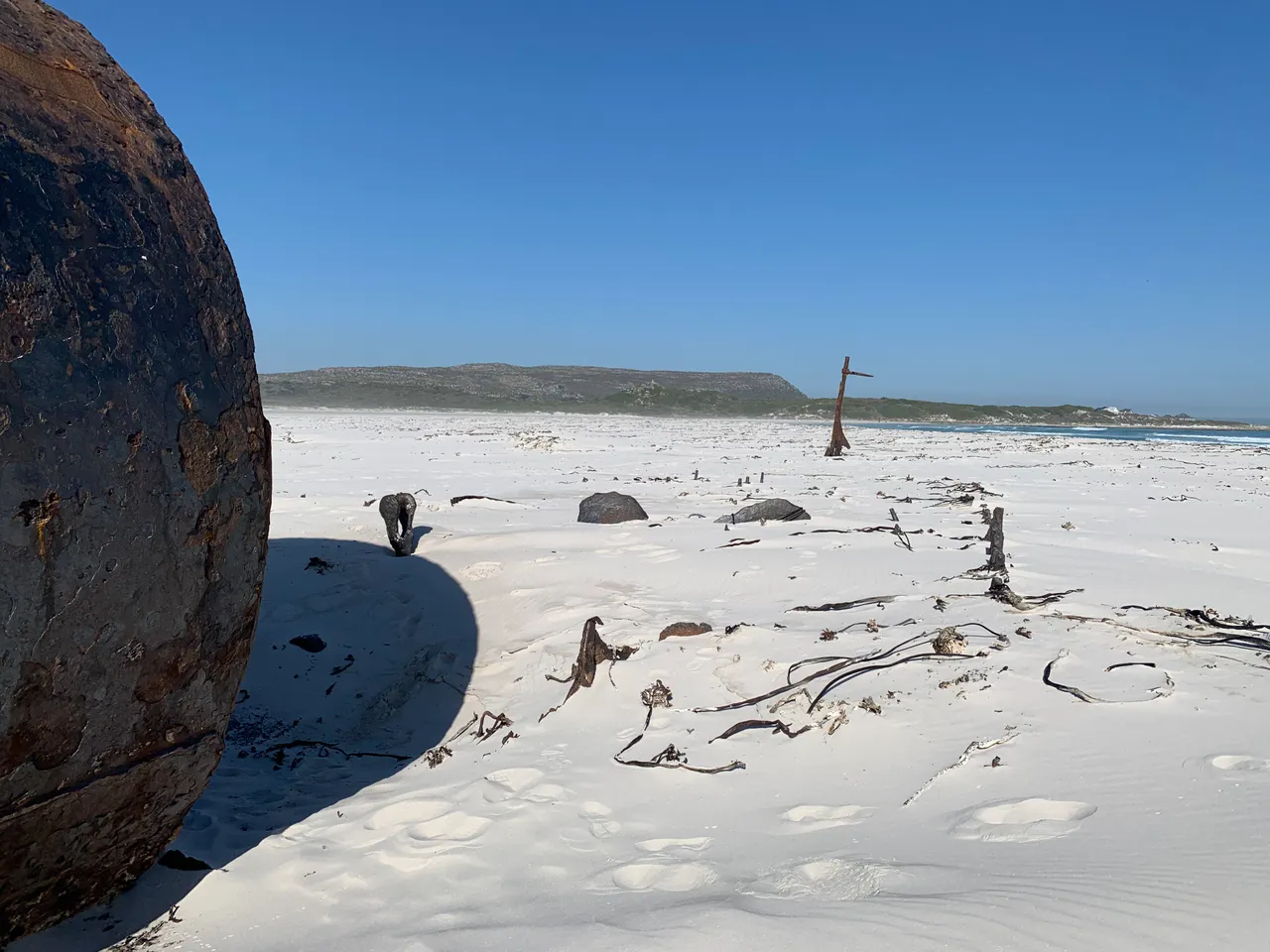
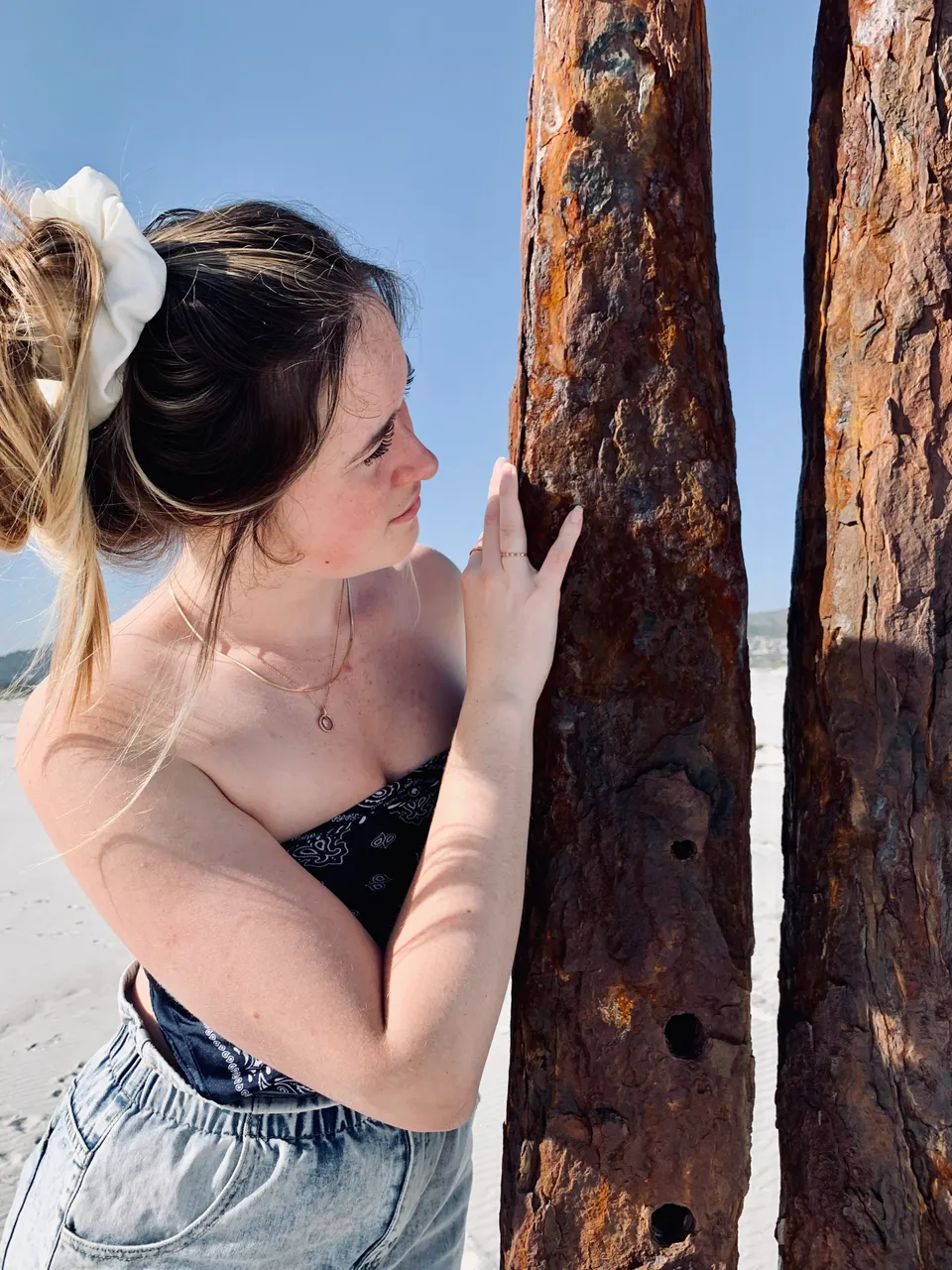
We took a few photographs with the rudder that is standing tall in the sand. It’s a little disconcerting walking bare foot amongst shards of scrap metal hidden in the sand. So after some exploring and investigating we headed back down the beach.
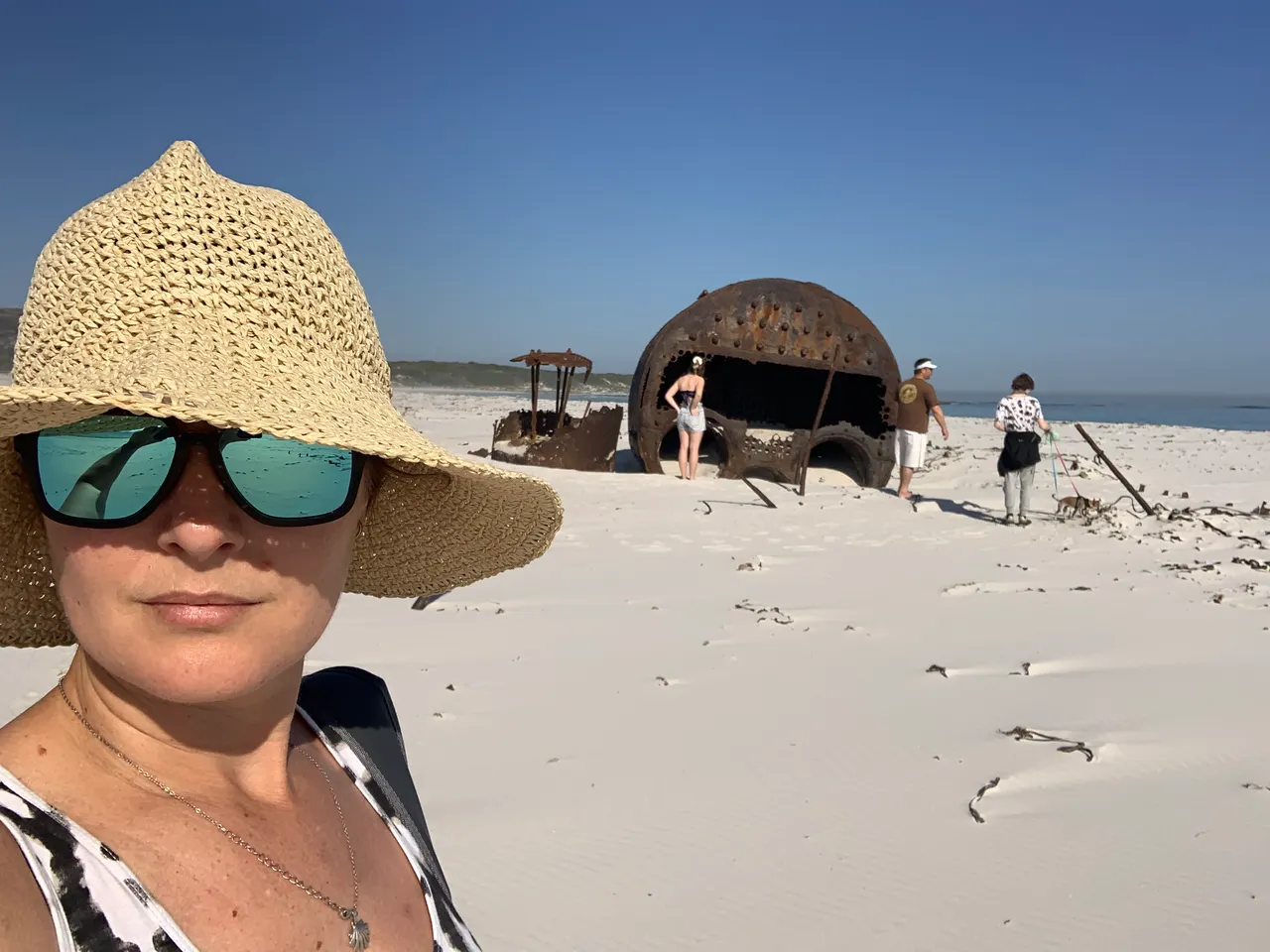

On the way back we passed the giant log that washed up on the beach about 30 years ago after a logging ship lost its load in bad weather. Are you seeing the trend? It’s why Cape Town is called the Cape of Storms and why the fast changing weather is a part of our daily lives. Capetonians keep layers of clothes available and always bring a jacket to cope with our unpredictable weather.
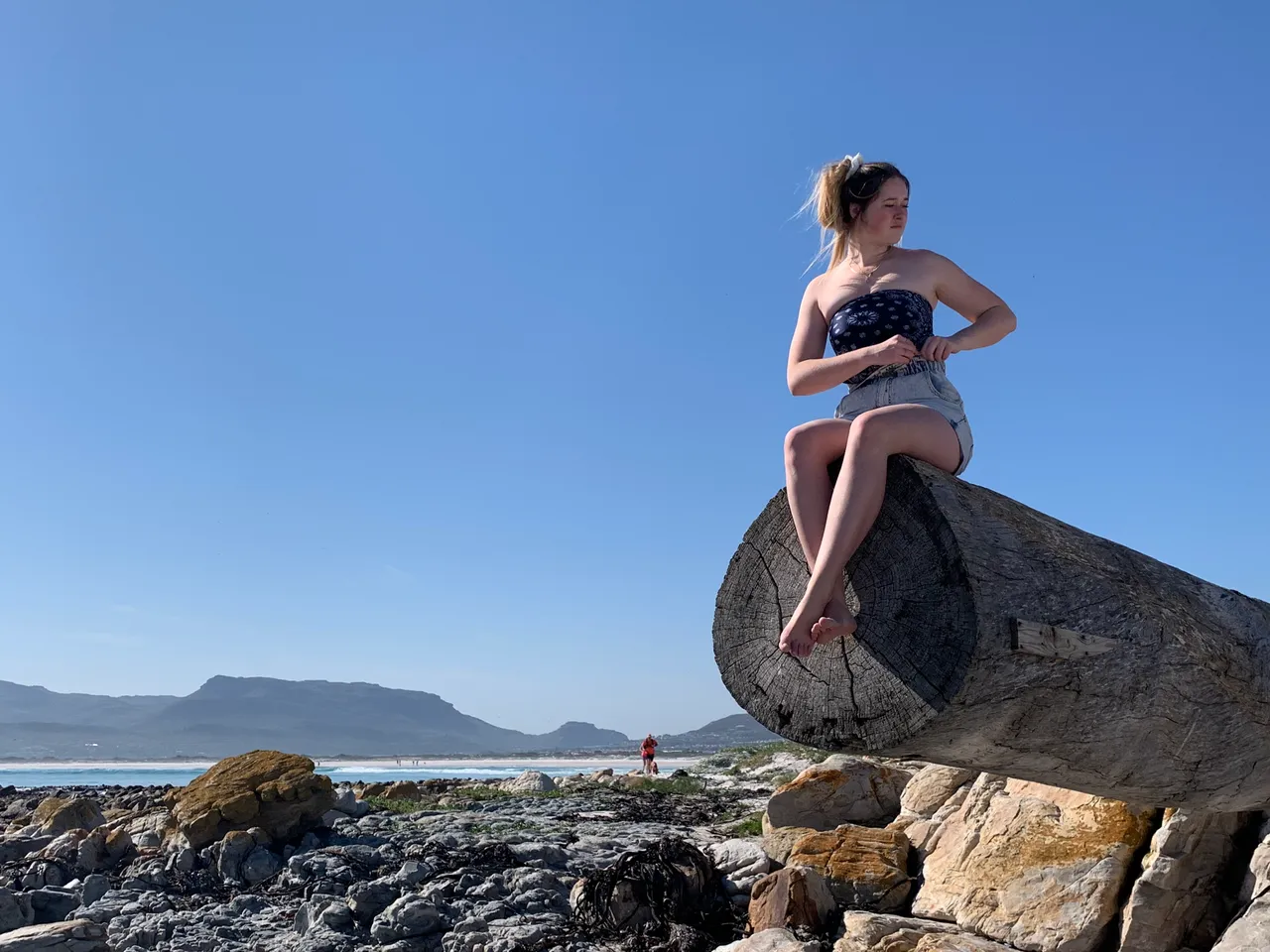

Today the weather is changing and another storm is approaching our little town on the peninsula. Soon the warm sunshine of Sunday will be a distant memory and photographs in the cloud. But if you happen to ever make it to Cape Town then look me up and we will take a gentle saunter out to the wreck of the Kakapo.
